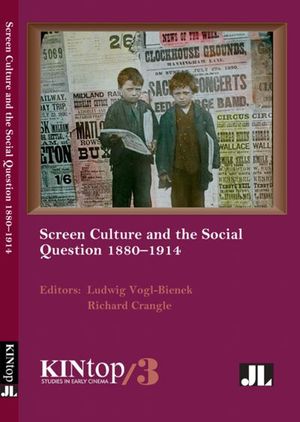Screen Culture and the Social Question, 1880–1914
Richard Crangle Follow this author
Follow this author
Published by Indiana University Press
Essays exploring how reformers and charities used the “magic lantern” to raise public awareness of poverty.
Public performances using the magic or optical lantern became a prominent part of the social fabric of the late nineteenth century. Drawing on a rich variety of primary sources, Screen Culture and the Social Question, 1880-1914 investigates how the magic lantern and cinematograph, used at public lectures, church services, and electoral campaigns, became agents of social change.
The essays examine how social reformers and charitable organizations used the “art of projection” to raise public awareness of the living conditions of the poor and the destitute, as they argued for reform and encouraged audiences to work to better their lot and that of others.
Public performances using the magic or optical lantern became a prominent part of the social fabric of the late nineteenth century. Drawing on a rich variety of primary sources, Screen Culture and the Social Question, 1880-1914 investigates how the magic lantern and cinematograph, used at public lectures, church services, and electoral campaigns, became agents of social change.
The essays examine how social reformers and charitable organizations used the “art of projection” to raise public awareness of the living conditions of the poor and the destitute, as they argued for reform and encouraged audiences to work to better their lot and that of others.
BUY NOW FROM
COMMUNITY REVIEWS

